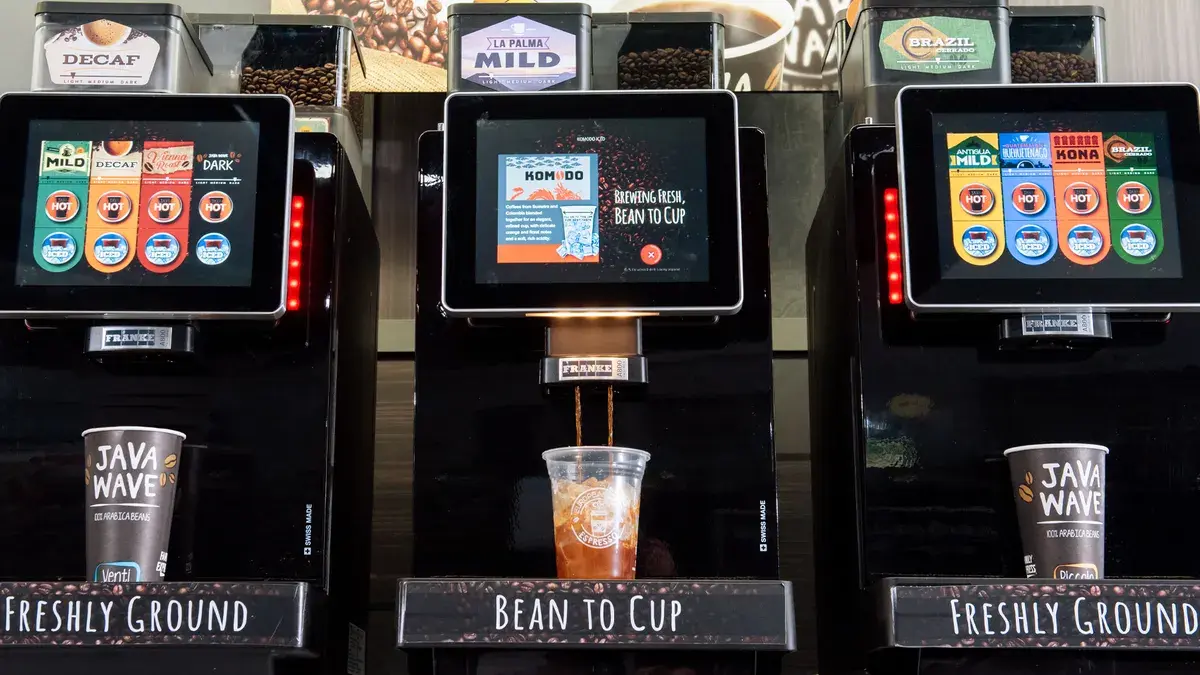
Facilities leaders are tasked with keeping stores running, equipment operating, and costs under control. Yet one of the most powerful drivers of customer traffic and sales is often overlooked in facility budgets: signage and lighting. While refrigeration and HVAC keep stores functioning, signs and lights shape customer perception before they even step inside. Data shows that investing in these areas is not just a cosmetic choice, it is a profit driver and a brand protector.
First Impressions Decide Traffic
Customers form opinions instantly. Research indicates 82 percent of shoppers are influenced by store design and upkeep, including signage and lighting, when deciding whether to enter a location. In convenience, where competition is high and differentiation can be razor-thin, a dark sign or flickering light can mean the difference between capturing a sale or losing it to the station across the street.
Once inside, effective signage and lighting guide purchasing decisions. Studies show more than 60 percent of businesses that upgraded signs reported at least a 10 percent increase in sales. In a grocery or c-store environment where margins average 2 to 3 percent, that increase is significant.
Lighting as a Sales Driver
Lighting is more than an operational requirement. It directly impacts customer behavior. Bright, clean lighting improves perceptions of freshness in grocery and increases time spent in aisles. For foodservice areas, well-lit displays encourage impulse purchases, particularly in bakery and prepared foods.
Conversely, poor lighting has measurable costs. A dark exterior not only deters customers but increases safety risks for both shoppers and employees. Studies consistently show that exterior lighting is strongly tied to perceptions of security, and customers are less likely to shop at night in poorly lit locations.
The Cost Pressure on Facilities
Signs and lighting projects compete for budget against rising operating costs. In grocery, repairs and maintenance expenses rose 17.3 percent over two years. In convenience, operating costs climbed 40 percent between 2021 and 2023, with maintenance and repair specifically up 38 percent. With budgets under strain, signage and lighting upgrades are often deferred.
But deferral has consequences. Aging lighting systems consume more energy, and outdated signage weakens customer perception. Energy-efficient retrofits, for example, can cut utility costs by 12 to 18 percent annually. In an environment where utilities are one of the top three controllable expenses, upgrades deliver hard-dollar ROI.
The ROI of Signage Upgrades
Case studies show that signage improvements directly boost revenue.
- 34 percent of shoppers associate sign quality with store quality.
- Businesses that upgraded signs reported 10 percent or more sales growth.
- A consistent brand identity across multiple sites reinforces trust and drives repeat traffic.
For grocery operators rolling out refresh programs, signage upgrades are one of the fastest ways to deliver visible ROI. Unlike back-of-house upgrades, signage changes are immediately noticed by customers and influence their decision to shop.
The Technology Shift
New technology is transforming both lighting and signage strategies. LED retrofits have become the standard, offering longer lifespans, lower maintenance, and reduced energy consumption. Digital signage provides the flexibility to update promotions in real time, reducing printing costs and enabling localized marketing.
Facilities leaders can integrate these upgrades into broader energy and project strategies:
- LED retrofits reduce energy consumption by up to 50 percent, with ROI often achieved in under two years.
- Digital displays increase impulse purchases and allow chains to test different promotions across geographies.
- Automated monitoring systems track lighting performance and identify outages faster, reducing downtime and labor hours.
Pain Points in Execution
Despite the clear benefits, signage and lighting projects are challenging for facilities teams.
- Scale: Rolling out upgrades across hundreds of sites requires coordination with providers, permitting, and local regulations.
- Downtime: Many projects must be completed overnight or while stores remain open, requiring specialized crews.
- Invoice creep: Without strict oversight, costs for materials and labor often exceed estimates. Studies show inflated costs of 14 percent on materials and 9 percent on labor in multi-site portfolios.
These pain points highlight why structured rollout programs and technology-enabled project management are critical for success.
Signs and Lighting as Part of Brand Protection
For customers, signs and lights are synonymous with brand quality. A bright, well-maintained sign communicates reliability. A flickering light or outdated fascia suggests neglect. In grocery and convenience, where fresh perception is critical, these signals influence whether a shopper buys produce, chooses prepared food, or simply leaves.
Facilities leaders who treat signs and lighting as part of the brand promise gain an advantage. Upgrading them proactively prevents customer attrition, supports safety, and creates measurable ROI.
Leadership Actions
To maximize value from signage and lighting, facilities directors should focus on four key actions:
- Link upgrades to sales data. Demonstrate ROI by tying signage and lighting improvements directly to revenue gains.
- Embed into preventive programs. Track lighting uptime and signage condition alongside HVAC and refrigeration to avoid deferred maintenance.
- Use technology for cost control. Integrate invoice audits and real-time monitoring to eliminate overcharges and track performance.
- Plan rollouts strategically. Coordinate upgrades with refresh and remodel projects to minimize downtime and maximize efficiency.
Conclusion
Signs and lighting are often overlooked in facility budgets, yet they deliver some of the highest ROI in grocery and convenience. They influence customer perception, drive traffic, and improve safety, all while reducing long-term costs through energy efficiency.
With operating expenses rising and customer expectations higher than ever, deferring signage and lighting upgrades is no longer sustainable. By prioritizing them as strategic assets, facilities leaders can protect brand trust, capture incremental sales, and strengthen profitability across every location.
For executives, the message is clear: facilities strategies must look beyond equipment uptime. The glow of a sign and the brightness of a store are among the first and most lasting impressions customers take away. Investing in them is not cosmetic, it is a business imperative.
Let’s talk.
Get in touch and fill out the contact form below!




